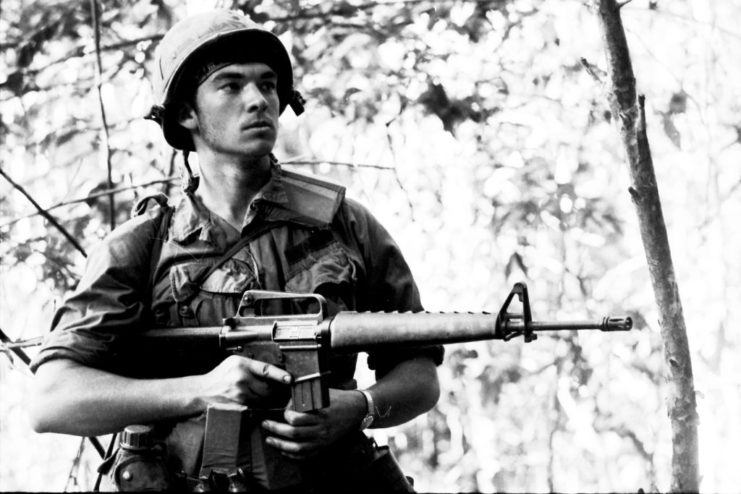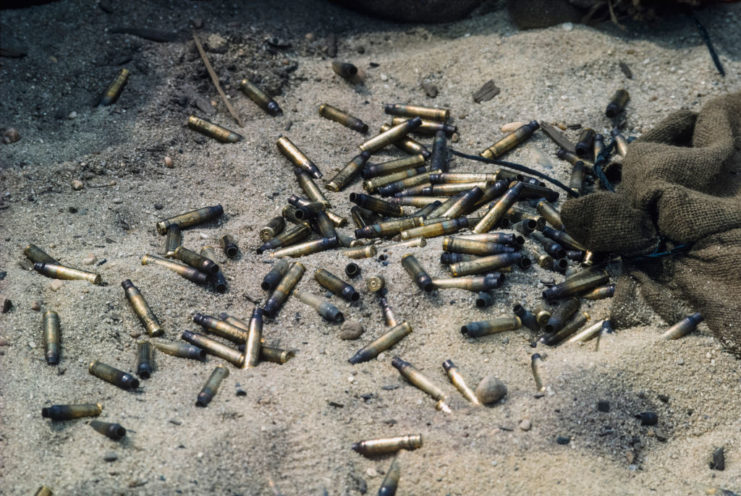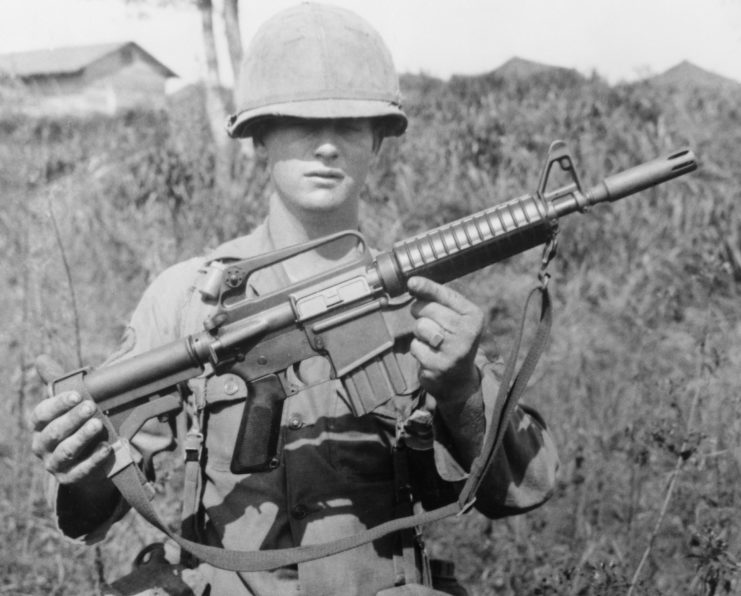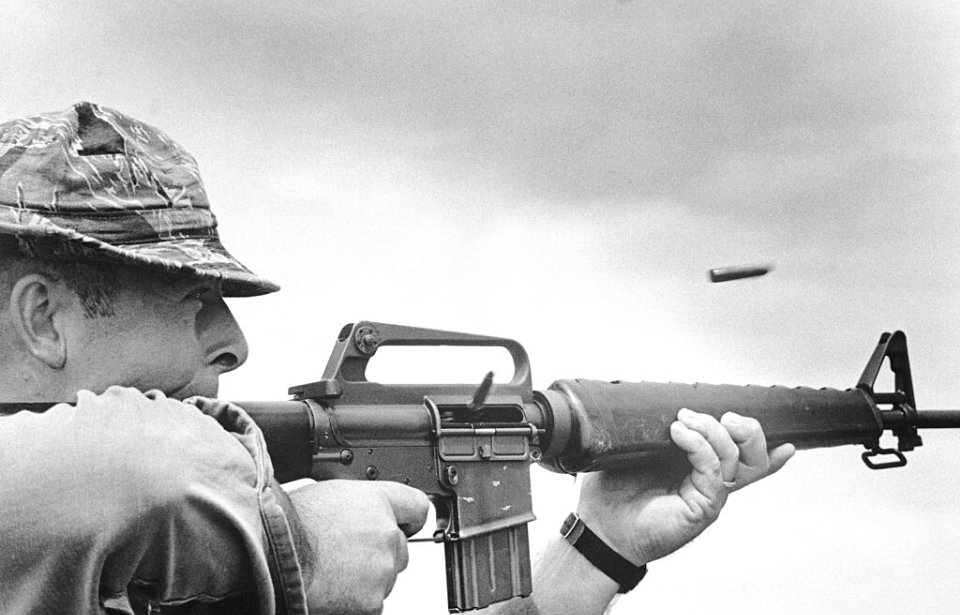The M16 rifle was initially adopted for use in jungle warfare operations in Vietnam. However, it wound up being such an unreliable weapon that American troops began purchasing, via the underground market, AK-47s used by the enemy.
Adoption of the M16 rifle in Vietnam
In 1966, Gen. William Westmoreland, Commander of the US Forces in Vietnam, introduced the M16 rifle as the new standard-issue infantry rifle, replacing its predecessor, the M14. Developed by engineer Eugene Stoner in the late 1950s, it was favored for its accuracy, light weight and the amount of fire it provided.

American troops in Vietnam were given a modified version of the M16, variant XM16E1. The weapon’s adoption was largely in response to the high number of casualties resulting from the enemy’s use of AK-47s. However, controversy surrounding the efficacy of the M16 prevented it from being issued to troops stationed in Europe and the US.
The M16 rifle jammed… A lot
The first generation of M16 rifles were incredibly problematic. They often experienced a “failure to extract,” meaning soldiers were stuck with a jammed weapon in the middle of battle. More often than not, a spent cartridge shell would become lodged in the chamber after the weapon was fired. In the wake of modern warfare, the M16 operated like a single-shot musket.
The only sure-fire way soldiers could repair the weapons was to push a metal rod down the muzzle and discharge the cartridge. It was later discovered that the jamming was the result of the switch to ball powder, which was intended to increase the muzzle velocity to up to 3.250 feet per second.

Despite its issues, the M16 was still considered more effective than the M14, with the US Army going so far as to say it was the best rifle for fighting in Vietnam. To try and combat the issues, the service enacted improved training procedures, changed the composition of the ammunition powder and widely distributed cleaning kits – but not before the release of a Congressional report.
A harrowing report is released
In 1967, approximately 80 percent of the 1,585 troops surveyed said they’d experienced stoppage issues while fighting with the M16 rifle. Many of them wrote home, complaining about the unreliability of the firearm. Families who received these letters presented them to their Congressmen in an attempt to attract the attention of the House Armed Services Committee.

Their plan worked, and before long a Congressional Subcommittee was established to investigate the M16. After a thorough investigation, their report exposed the shortfalls troops had been complaining about all along. The report outlined how the Army had failed to train troops on the new weapon and ensure it worked well with its ammunition, and hadn’t supplied enough cleaning equipment to address the jamming issue.
Regardless, the service continued to equip its troops with the M16. As it remained unreliable, many of those serving in Vietnam lost trust in the M16 and began searching for a replacement.
Picking up the AK-47
The AK-47s used by the People’s Army of Vietnam (NVA) and the Viet Cong became the replacement US troops were looking for. After receiving the technical specifications for it in the mid-1950s, China set up assembly lines to mass produce and distribute their own variant of the weapon, the Type 56, throughout southeast Asia. The Type 56, also known as the AK-56, was shorter, lighter and could be fired automatically or with a single shot.
Of utmost importance, the assault rifle was reliable, durable and could be mastered in only a matter of hours.

Picking up the enemy’s weapon became a temporary solution for the Americans, as using the AK-47 was better than dying. Ultimately, an underground market developed among troops to equip themselves with the firearm. The Army continued to push the use of the M16, claiming those experiencing issues didn’t understand how to properly maintain the rifle.
